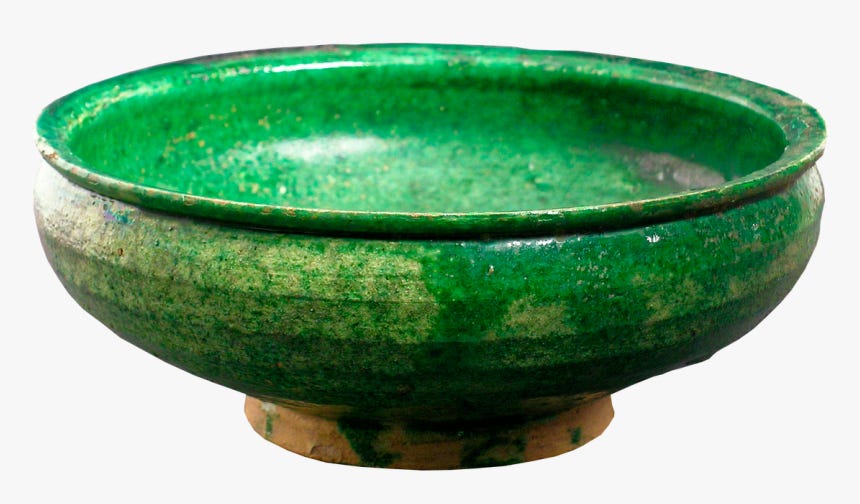In his book The Great Mother, Jungian psychologist Erich Neumann describes the structure and symbolism of the mother archetype. One of the main symbols is that of the vessel or container.
“For obvious reasons woman is experienced as the vessel par excellence. Woman as body-vessel is the natural expression of the human experience of woman bearing the child within…” - Neumann, The Great Mother
While it is most obvious to think of a container as a feminine symbol it can be expanded further by considering how a bowl is masculine. In Jungian psychology wholeness and balance between opposites, like feminine and masculine, is the goal and this can be applied to symbols to enhance their meaning.
If a symbol is said to be masculine or feminine consider the interpretation of the symbol to be incomplete. Think of genders as adjectives, like colors, instead of inherent parts of the symbol and apply them in order to explore it. In Jungian dream interpretation colors have certain meanings; sometimes red is related to feeling and blue to thinking. If containers are thought of as feminine then in what way is a bowl masculine?
If we take Neumann’s claim that containers are feminine because women bear children then let us think of the interior of a bowl of fruit as feminine and the exterior of the bowl as masculine. The interior is directed inward toward the fruit it is holding; the exterior is directed outward toward what it is keeping out. The exterior of the bowl holds the interior up protecting it from what is underneath it. If the bowl were flipped over the interior would continue to hold the fruit and the exterior would continue to protect the interior.
This symbolism of the feminine interior and masculine exterior of the bowl can be expanded to the home itself. The home is a container that holds the family and protects it from weather and intrusion. Archetypally, the interior of the home, facing inward toward the hearth, is feminine while the exterior faces outward in masculine defense. In this way the symbol of “walls” is also both masculine and feminine. The idea of a container can be expanded further by moving away from the concrete toward the abstract. The walls of the town are another container holding the homes and defending them. The borders of the country, marked sometimes by fences, sometimes by stones, sometimes by the abstraction of lines on a map and laws on paper are also containers holding some things in and keeping others out. Each example contains both masculine and feminine without being inherently either. The symbol of “container” sits whole and neutral beyond the things it expresses and contains.
So, when someone says a symbol only expresses one side of a duality know that this is incomplete. For example, if someone says vessels are feminine or writes an article saying that the exteriors are masculine then ask what it would mean for it to be feminine.
Question: How could this be applied to an obviously masculine symbol like a phallus?




